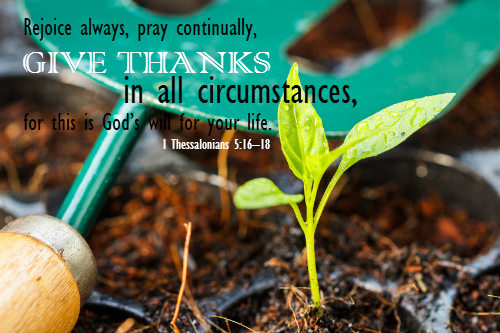There are few greater gifts than the gift of friendship. Today, I’m thankful to introduce my good friend Andrea Gurney. She’s a professor at Westmont College, Ph.D, psychologist, and friend for over two decades (how is that possible?). If you enjoy the following post on gratitude, be sure to check out Andrea’s blog, Stand in Love.
By Andrea Gurney

A grateful heart changes everything.
It’s no surprise, then, that Jesus reminds us to be grateful 150 times in Scripture. Science is trying to catch up to Jesus (as often is the case!), and studies are beginning to reveal the importance of being grateful. Repeated empirical studies indicate that when we practice gratitude, we have higher levels of positive emotions such as joy, enthusiasm, love, happiness, life satisfaction, vitality, and optimism and lower levels of depression and stress. It’s hard—if not impossible—to be stressed and grateful at the same time, after all! Practicing gratitude also leads to increased feelings of connectedness, improved relationships, greater empathy, and even altruism.As a clinical psychologist who has studied resiliency in children and families, I can attest to the power of gratefulness. Two people can undergo the same hardship, pain, or trauma, and their attitude can make all the difference in the world. I have seen this in my clinical office, and there is a burgeoning field of research indicating that gratitude mitigates the trials and tribulations of life.
When we follow Jesus’ call to gratitude, an inner shift of consciousness can occur as we focus on what we have, rather than what we have not. This is when hope emerges. And, in a 2004 study conducted with 5,299 adults, both hope and gratitude were found to be strongly correlated with life satisfaction.
How then do we cultivate gratitude in our own lives? Robert Emmons, a lead researcher in the study of gratitude, purports three simple steps:
- Look for the good.
On a daily basis, we need to be mindful of the simple blessings that surround us. A call from a friend, chirping birds, a kind word, laughter among children, ladybugs, long walks, shared ideas . . . We live in a world that is full of both beauty and suffering, and we can readily become overwhelmed with what’s hard, painful, stressful, and tragic. It’s easy to focus on the clouds, but our challenge is to realize that it’s the sun that allows us to see the clouds. The simplest form of gratitude is joy.
- Receive the good.
We need to take in, absorb, and savor the good. This is grace. We are so quick to move from one activity to the next these days that we forget to stop and see the wonder of this world. We need to slow down, breathe deeply, and savor the good around us. Next time you see something that makes your heart grateful, pause for one moment and relish in it. And then . . . share it!
- Give back the good.
This is where we pass on the good by sharing it, speaking about it, and serving each other. This is one way we can love one another. When we speak of the good around us, it becomes more real and tangible. Unfortunately, our natural default is often to speak about the hassles and annoyances in our day, especially with those we are closest to. May we all be mindful, though, that when we make known the good, we are taking a step in the direction of mental health, blessing others, and following God’s call to be grateful.
So see it, savor it, and speak it on a daily basis. Try this for two weeks, and let me know if you see a difference in your own life!
Andrea Gurney, Ph.D., is a licensed psychologist, an associate professor at Westmont College, and an author. She lives in Santa Barbara, CA, with her husband and their two daughters.




